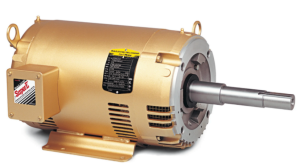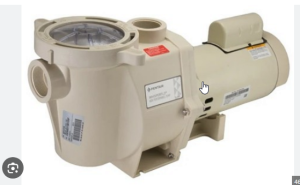

All electric motors produce heat while running and an electric motors worst enemy is excessive heat. Electric motors are cooled by a fan inside the motor that brings in ambient air. The fan can also bring in dust, dirt, leaves, small insects and moisture.
It is recommended to set the swimming pool pump on a stand several inches above the ground to avoid debris and dust from getting into the motor windings. Dust will restrict air flow and reducing cooling efficiency.
Also, if a leak develops from the mechanical seal, the water will go into the ground or concrete slab and not into the motor. This avoids an electrical short or ruining the bearings, avoiding costly repairs.
Prolonging the Lifespan of Your Swimming Pool Pump Motor
Electric motors, by their very nature, generate heat during operation. Excessive heat is a primary factor in premature motor failure, significantly reducing its lifespan. Understanding the cooling mechanisms of these motors is crucial for preventative maintenance. Swimming pool pump motors typically utilize an internal fan designed to draw in ambient air for cooling purposes. However, this cooling system can inadvertently introduce contaminants such as dust, dirt, leaves, small insects, and even moisture into the motor housing. These foreign materials can accumulate and negatively impact the motor’s performance and longevity.
One highly recommended practice to mitigate the risk of contaminant buildup is to elevate the swimming pool pump. Positioning the pump on a sturdy stand several inches above ground level creates a barrier against debris and dust. This simple measure helps prevent these substances from being drawn into the motor windings. Dust accumulation, in particular, poses a significant threat as it restricts airflow, dramatically reducing the motor’s cooling efficiency. The resulting heat buildup can lead to premature wear and tear on the motor’s internal components.
Furthermore, a common issue with swimming pool pumps is the potential for leaks to develop in the mechanical seal. When this occurs, water can seep into the surrounding environment, potentially damaging the motor. By elevating the pump, you create a space that allows water from a leaking seal to drain away from the motor housing. Instead of pooling around the motor and potentially causing an electrical short or damaging the bearings, the water will dissipate into the ground or onto the concrete pad. This simple precaution can prevent costly repairs associated with water damage, including motor rewinding or complete replacement. By implementing these preventative measures, you can significantly extend the life of your swimming pool pump motor and avoid unexpected disruptions to your pool’s operation.
